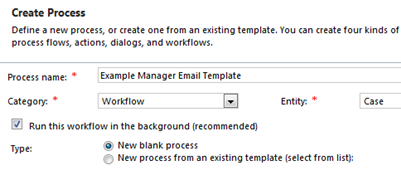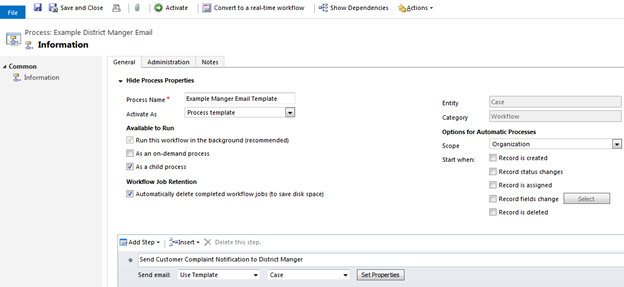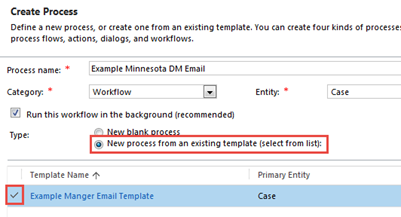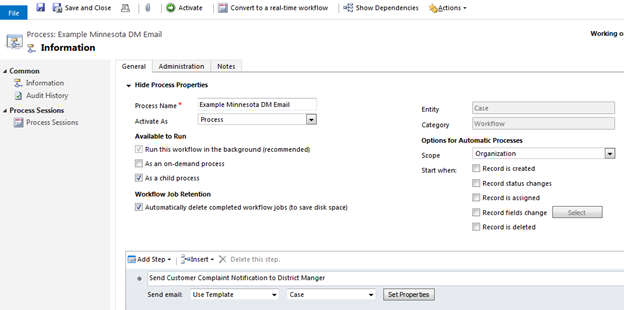When it comes to case management in Microsoft Dynamics 365, Dynamics CRM 2016, 2015, and/or 2013, workflows can be greatly utilized to ensure fast and efficient customer response time. This can save customer service teams a lot of time when it comes to routing cases or sending notifications.
In this specific example, we’ll be working with the case entity and utilizing workflow templates for child workflows. These child workflows send an email notification to the necessary individual(s) based on the state the customer is in. This example will only cover the child workflows that send the email. I already have a parent workflow that performs the necessary check conditions into which I will add the child workflows. I also already have an email template for each child workflow. These steps will work in Dynamics 365 as well as previous Dynamics CRM versions back to 2013.
First, we’ll start by creating our workflow template. Start by going to Settings > Customizations. From there, you can either add a new process in a desired solution or choose to customize the default solution by choosing Customize the System. Make sure you choose New blank process, as this process will serve as our template for the multiple child workflows.

Create the workflow with desired steps. Make sure to change Activate As to “Process Template”. As mentioned before, this example will use an email template to send an email to the district manager in the customer’s state.

Once you’ve created the workflow template, save and activate.
Now we’ll start creating the child workflows for the different mangers. Create a new process the same as before by selecting the desired entity. Before clicking ok, select “New process from an existing template” for the type. Select the template you just created; click ok.

You now have a copy of what you created in the template. Now all that needs to be done is to change the recipient of the email, save, and activate. You can do this as many times as necessary.

Something to keep in mind when creating the workflows from a template: if you change the template workflow, it will not change the workflows created from the template, and vice versa.
Now that you know how to create workflow templates, you can save lots of time when needing to create the same workflow repeatedly!
Would you like more tips for working effectively with Dynamics 365 or Dynamics CRM? Check out our Dynamics Community News publication or contact our experts at RSM 855-437-7202
by Chris Carley for RSM

 RSMUS.com
RSMUS.com